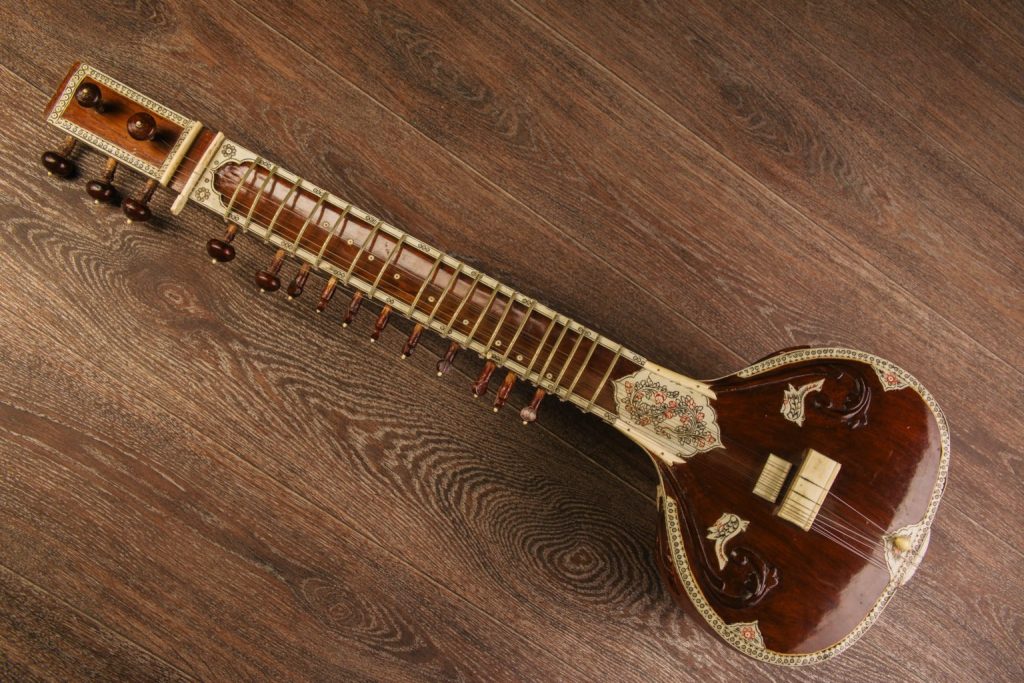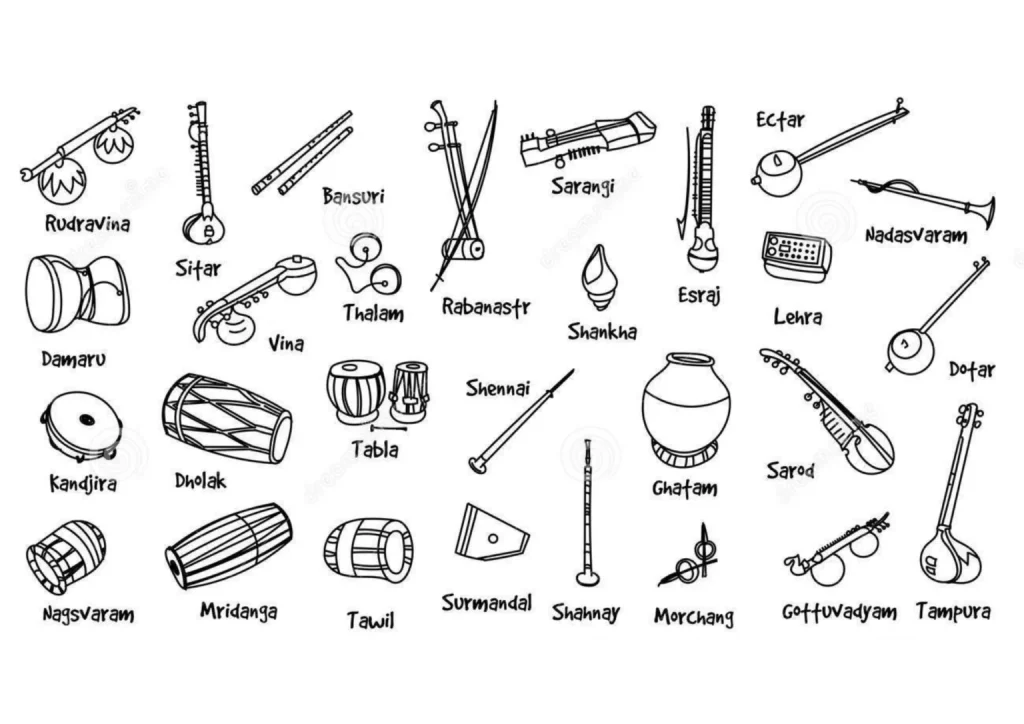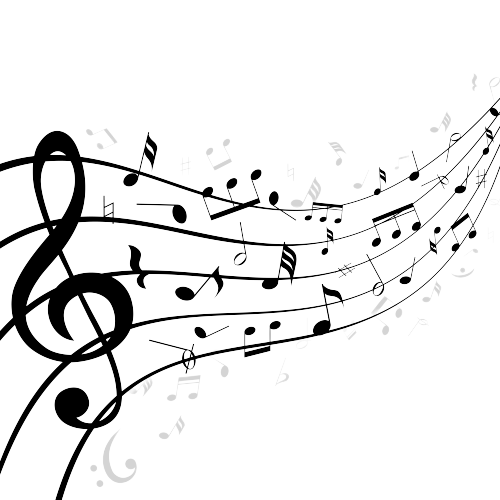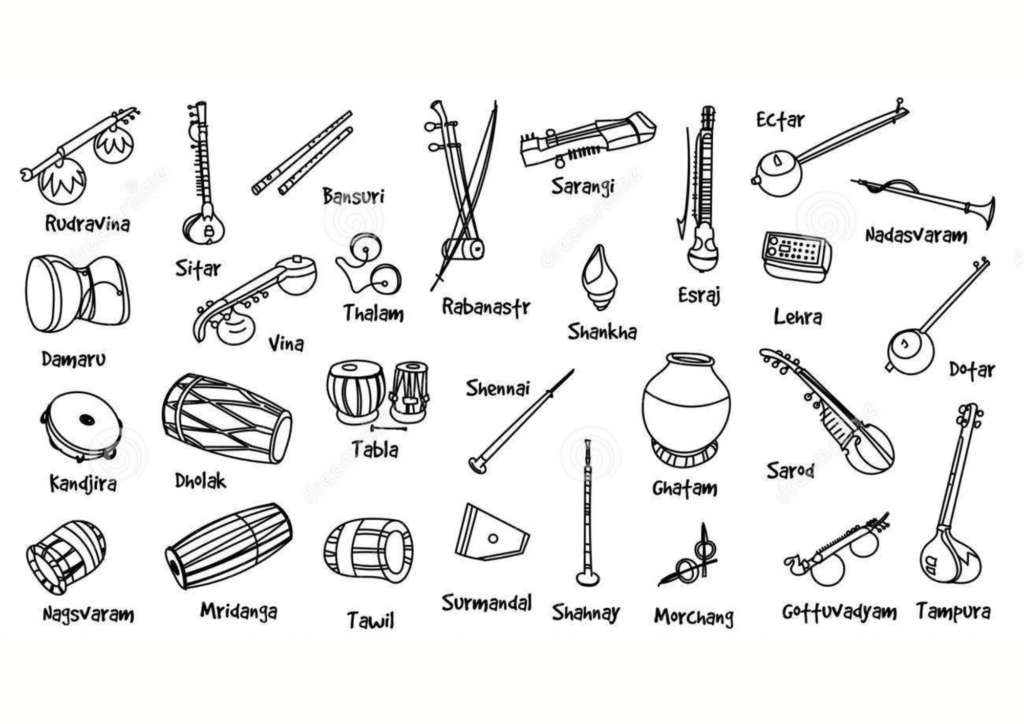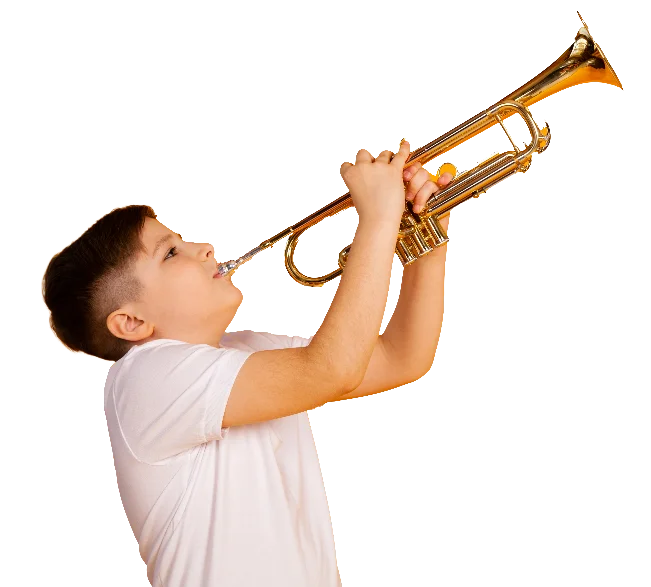The classical Indian Veena exists from the age of Rigveda. There are many historical pieces of evidence that prove Veena to be a celestial music instrument. According to Hindu mythology, The goddess Saraswati holds veena in her hands. Veena possesses a lot of constructional similarities to the human body and therefore, is also a scientific matter of interest. As Veena has so many marvellous features, it is very important to learn about its history as well, in order to learn, ”How to play the Veena”? To learn Veena, we are going to go through some of the important details related to the history and construction of veena. We will also learn a bit about playing the Veena. Let us proceed further.

Mythological importance of Indian Veena
According to the Indian Vedic Literature, Veena is one of the three principal music instruments along with the Flute and the Mridanga. Veena is also known as the Queen of the Indian musical instruments. There are several Mythological pieces of evidence showing pictures of Hindu gods and goddesses with Veena in their hands. The goddess of learning, the Saraswati is considered to be the one holding the Veena. Indian mythological literature states that playing the Veena is one of the ways to attain salvation. In fact, it states that playing the Veena is one of the easiest yoga to attain salvation.

Constructional similarities between the Veena and the Human body
As per the Indian Vedic literature, Veena is of two types:
- Deiveeka Veena
- Maanushi Veena
The god created Deiveeka Veena, that is the human body whereas the human-made Veena out of wood, known as Maanushi Veena. There are so many similarities between the organization of the human body and the Veena. Some of them are as follows-
- The Head
Veena also has a head just like the human body. It is called Kudam. The four strings of the Veena spiritually represent the four Indian Vedas.
- The Backbone
Just as the human body has a vertebral backbone consisting of 24 segments, Veena also has 24 frets. According to the Indian Vedic literature, the 7 cervical vertebrae represent 7 strings of Veena. The 12 Thoracic vertebrae represent the 12 Swara than of the Veena. The 5 Lumbar vertebrae represent the 5 notes R, G, M, D, and N.
- Two Hands
Veena is played by both hands. The two hands represent Mind and Intellect.
Learn the Construction of Veena
The classical Indian Veena has a length of about 1 to 1.2 meters. The body is made from hardwood and is hollow from the inside. Almost every design of Veena has 4 melody strings, 3 drone strings, and 24 frets. There are traditional Hindu designs and colours on the external surface of the Veena.
Types of Veena
The ancient Indian Veena was more like a Harp instrument. There are various types of Veena that have been mentioned in the Indian Vedic literature. Some important types of Veena are as follows-
Rudra Veena
According to Hindu mythology, Rudra veena has close associations with Lord Shiva. It has two large and equal size resonators. While playing Rudra Veena, one needs to keep it in a slanted position such as one gourd on a knee and then another above the shoulder.

Saraswati Veena
Saraswati Veena is the form of Veena that is most familiarly mentioned in Hindu Vedic pieces of literature. The Saraswati Veena has its origin somewhere in South India. It is different from the Rudra Veena as it has two resonators of different sizes. As the name suggests, Sarswati Veena is the instrument of the goddess of learning, the Saraswati.
Vichitra Veena
This form of Veena differs from other forms as it doesn’t have those 24 frets. Due to the absence of frets, it sounds very much like a humming human singer. It uses a slide to choose notes unlike other forms of Veena that use frets.

Playing a Veena
To play the Veena, the musician has to pluck the melody strings downwards using his two fingers, the first and the second. The musician has to strum the drone strings with the help of the little finger of his playing hand. When desired, the resonating strings can be stopped with the free hand. According to the Hindu mythological fiction, playing the Veena leads to salvation.
Therapeutical effects of Learning Veena
In many parts of India, people believe there are many therapeutical effects of playing and listening to the divine music of the celestial musical instrument, the Veena. In South Indian communities, people believe that for pregnant women, it’s clinically beneficial to listen to the divine melodies of Saraswati Veena. They believe that by listening to the music of Veena, the baby in the womb first develops the hearing senses.
There are even some scientific researches that claim the therapeutical effects of the Veena. Raga YAmunakalyani stimulates the energy centres of the human body. Listening to this raga helps in the positive growth of the baby in the womb.
As per the Hindu Vedic pieces of literature, The vibrations of some specific notes activate chakras in the body. The chakras help in healing the diseased organ site in the body by having a positive effect on specific nerves.
Summary
The classical Indian Veena is of great historical, medical, spiritual, and scientific importance as well. As per the Hindu mythological literature that playing the Veena leads to the attainment of salvation. As per the Vedas, playing the Veena is the easiest yoga to achieve salvation. Veena has so many constructional similarities with the human body. Playing the Veena with complete devotion helps one to achieve mental peace and physical growth as well.
I hope, you liked this article.
Share with your friends

